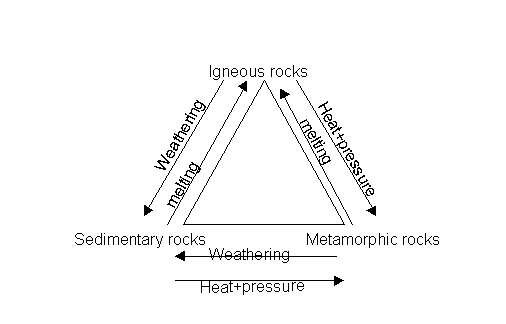
Igneous rocks
rock
cycle

Igneous
rocks form when magma (molten rock) cools down and CRYSTALLIZES.
How
does magma form?
Probable
causes of melting:
1.
Geotermal gradient: (gg)
The
rate at which temperature increases with increasing depth beneath the surface.
In an
average it is ~25°C/KM on Earth.
However
it is not the same everywhere
Much
higher in active volcanic region, and lower at plate interiors.
Beneath
the volcanic region to melt the rocks there is no need for larger depth (50°C/KM.).
However beneath a plate interior, much larger depth is necessary for melting (17°C/KM.).
2. HOT
MANTLE PLUMES
Hot
spots in the crust (with very high local geothermic gradient), usually above hot
mantle plums (Hawaii) probable Yellowstone park.
3.FRICTION
Rocks
griding past rocks may generate heat as well. (along tectonic zones).
4.HEAT
TRANSFER
Heat
from magma body may pass through country rocks and heat them. crystallization o
f magma releases lots of heat.
CONTROLLING
FACTORs
- PRESSURE
Melting temperature increases with increasing pressure.
Pressure
on the other hand is increasing with increasing depth, meaning, if a rocks would
melt at the surface at a certain temperature would need highertemperature to
melt in the mantle.
-Presence of water under pressure
If
enough gas especially water vapor is present under high pressure, the melting
temperature will be lower.
ex. water pressure in granite lowers the melting
tempr. from 900 ° to 650°c
-MIXING MINERALS
Will lower the melting temperatures.
How
magmas with different composition evolve?
Differentiation
As
the magma starts to crystallize the forming solid crystals separate out,
gradually changing the composition of the remaining magma.
(like
the whole milk differentiates into cream and skim milk).
A
scienctist named Bowen had a high temperature laboratory, where he constructed a
series of experiments, and figured out the order of crystallization. He
collected different igneous rocks, and melted them together.
He
figured, that the minerals crystallize first have higher melting temperatures,
than those which would crystallize as last.
CRYSTALLIZATION
BEGINS ALONG TWO BRANCHES
Discontinuous
Branch
1.
Olivine with very high Fe, Mg. after olivine crystallized the remaining liquid
has less Fe, Mg, and more Si.
2.magma
further cooles down, till it reaches the melting temp. of pyroxene, and it
begins to crystallize. some pyroxenes forming from previous olivine reacting
with the melt, others crystallizing from the melt, till the temperature reaches
the melting temp. of amphibole
3.
Pyroxene reacts with the melt and it rearranges into amphibole
4. The
next step is biotite
Any
magma left after biotite, has no Mg, and Fe
CONTINOUES
BRANCH
CA,
NA FELDSPARS
Plagioclase
feldspars
The Ca
rich plagioclase starts to crystallize, with the highest melting temperature. As
the temperature cools, more and more Na incorporates into the structure. This
branch is crystallizing till all the Na and Ca is gone.
If any
more melt is left, than it has lots of Si and K and Al
Potassium feldspar if the magma is dry
muscovite if water pressure high
the
last phase to crystallize if there is still melt is pure silica
QUARTZ
Bowen
used his experiment to prove, that every kind of igneous rock could form from a
single magma called parent magma (by differentiation).
In
reality there is differentiation, but rare .
Most
of the time there are different magmas. magmas with low or high SiO2
content. SiO2 content is very important.
UltraMAFIC: Very low SiO2
MAFIC: LOW SiO2 LESS THAN 45%
INTERMEDIATE:45-60% SiO2
FELSIC:MORE THAN 60% SiO2
WE
KNOW, THAT THE MANTLE HAS VERY LOW SIO2
CONTENT,
AND
THE CONTINENT HAS HIGH SIO2
HOW
magma
with DIFFERENT
composition can form??
ALONG
MID-OCEANIC RIDGES WE HAVE MAFIC MAGMA FORMING
BUT
THINK WHAT HAPPENES ALONG SUBDUCTION ZONES WHAT DO WE HAVE?
1, OCEANIC/OCEANIC CRUST + SEDIMENTS (MOSTLY
KAOLINITE (HIGH SIO2
CONTENT) AND LOTS OF
SEAWATER
+ LOW SIO2 OCEANIC
CRUST===INTERMEDIATE MAGMA,LOWER
MELTING TEMP. BEC. OF THE WATER
2. COLLISION, OR OCEANIC +CONTINENTAL
FELSIC CONTINENTAL CRUST, + SEAWATER,
+KAOLINITE======FELSIC
MAGMA
Assimilation
Magma
form somewhere else intruding and melts some of the country rocks
Partial
melting
When
the temperature is not high enough to melt the whole rock, the minerals with the
lowermost melting temperature will melt, resulting in the formation of more
felsic magma than the original composition.
VISCOSITY
Viscosity
tells us how the magma is able to flow, and helps us to know how violent an
eruption will be.
Viscosity
depends on:
1. temperature
higher the temperature the larger the ability of the magma to flow
(less viscous) like water
2.SiO2
content of the magma
The more SiO2
the magma has the higher the viscosity will be. In the melt more and more SiO2
will result in more complex huge
silicate structures, and it slows
down the flow ability (honey)
Depth
of crystallization
If
the magma will not reach the surface
INTRUSIVE
![]() If
it gets to the surface EXTRUSIVE
If
it gets to the surface EXTRUSIVE
HOW DO
WE KNOW THE DIFFERENCE:
INTRUSIVE:
SLOW COOLING ----------LARGE CRYSTALS
EXTRUSIVE:FAST
COOLING -----------SMALL CRYSTALS
extrusive molten magma is LAVA
TEXTRURE
OF IGNEOUS ROCKS
Phaneritic
The
characteristic intrusive texture
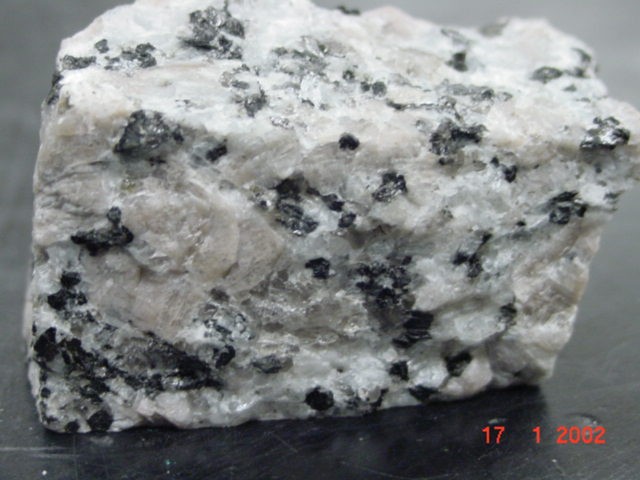 Each
crystal is visible with naked eyes
Each
crystal is visible with naked eyes
Extrusive texture types:
1.
Porphiritic
(mixed)
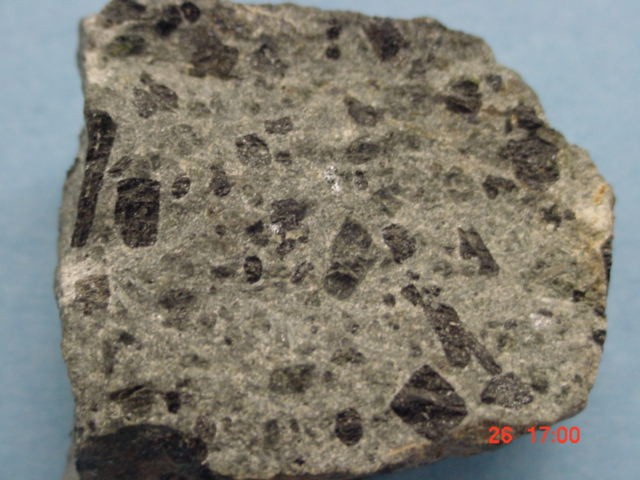 Some crystals are visible, but most in the so called matrix is invisible for the
naked eye.
Some crystals are visible, but most in the so called matrix is invisible for the
naked eye.
2.
Aphanitic
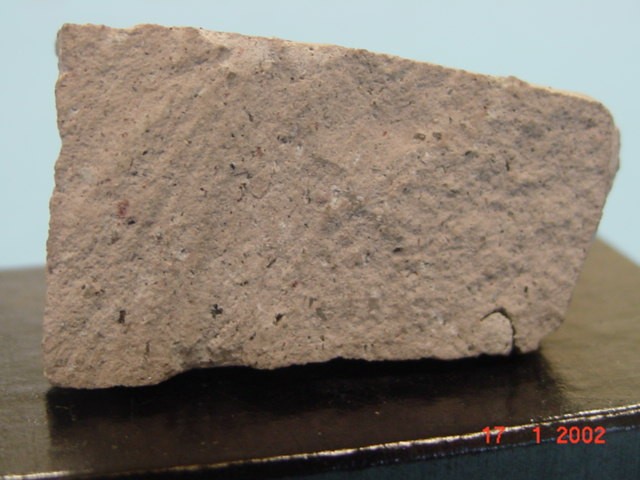 Very few tiny crystals, most everything is invisible in the matrix.
Very few tiny crystals, most everything is invisible in the matrix.
3.
glassy
(hyaline)

4. vescicular
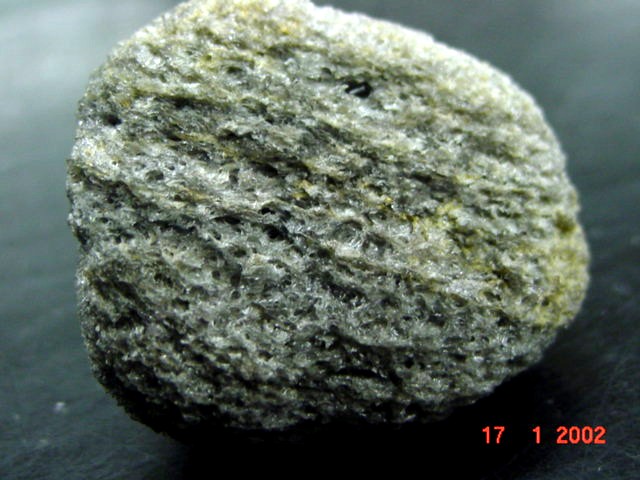 Volcanic glass with gas bubbles
Volcanic glass with gas bubbles
5.
Pyroclastic
Classification
of igneous rocks
1. Felsic group
Intrusive version: Granite
Texture: Phaneritic 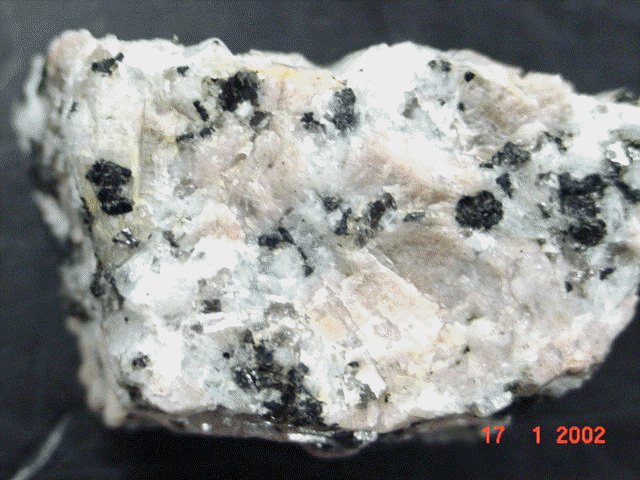
Composition: Quartz, K-feldspar, Biotite, Amphibole
Texture: Aphanitic 
Composition: Same as granite,
Visible: few tiny feldspar, Biotite, Amphibole crystals
Extrusive versions: 2. Obsidian
Texture: Glassy
Composition: Same as granite,
No visible minerals 
Extrusive versions: 3. Pumice
Texture:
Vesicular 
Composition: Same as granite, no visible minerals
2. Intermediate group
Intrusive version: Diorite
Texture: Phaneritic 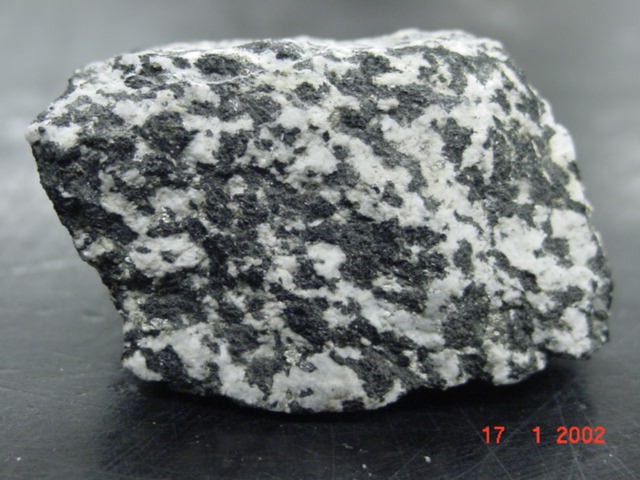
Composition: Na-plagioclase, Biotite, Amphibole
Texture: Porphiritic 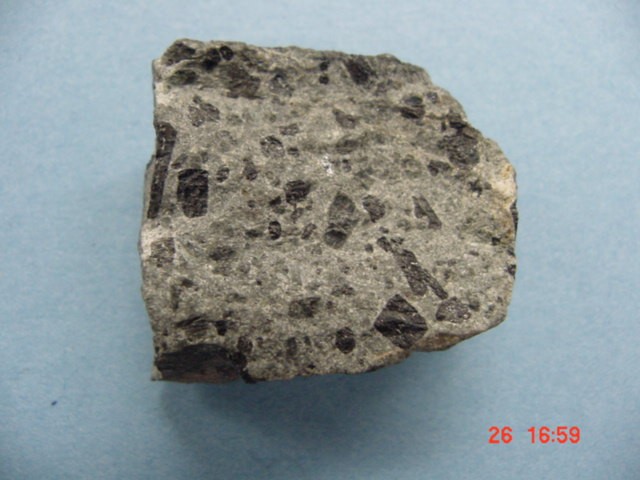
Composition: Same as Diorite
Visible: Some Biotite, Amphibole crystals
3. Mafic group
Intrusive version: Gabbro
Texture: Phaneritic
Composition: Ca-plagioclase, Olivine, Pyroxene, Amphibole
Texture: Aphanitic
Composition: Same as gabbro
Visible: few tiny olivine
Extrusive versions: 2. Porphiritic basalt
Texture: Porphiritic
Composition: Same as gabbro 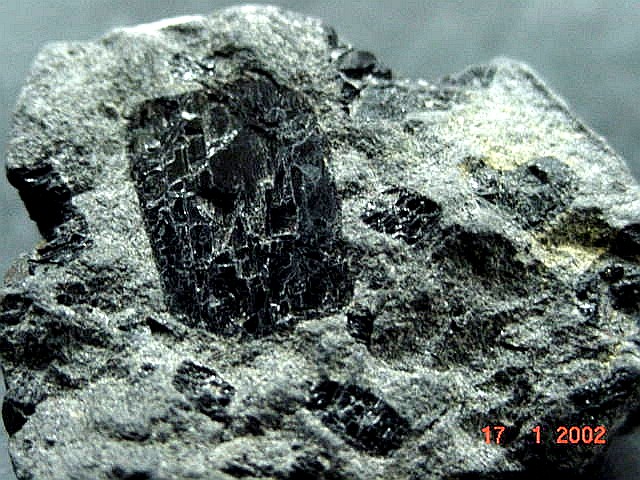
Visible mineral: pyroxene
Extrusive versions: 3. Scoria
Texture:
Vesicular 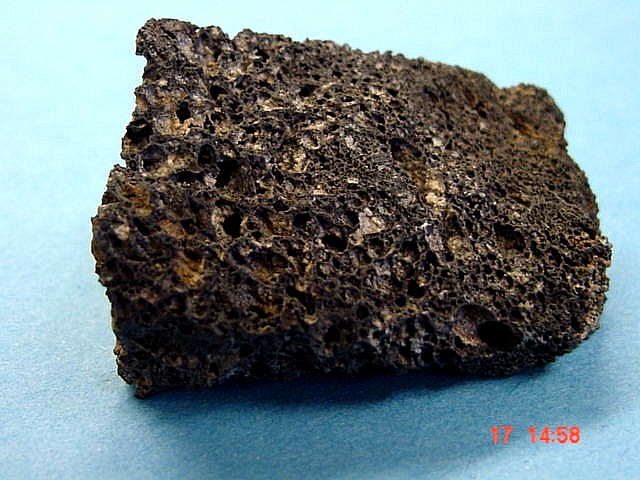
Composition: Same as gabbro, but no visible minerals
4. Ultramafic group
Intrusive version: Dunite
Texture: Phaneritic
Composition: Olivine, Pyroxene
Occurence
of igneous rocks
Most
magma is implaced at depth and never come to the surface. They are called
PLUTONS
we
can study them after erosion
Dike
discordant
Sill:tabular
plutons formed along sedimentary layers (Palisades sill) Their depth is shallow,
they often very similar to volcanic rocks. (basaltic most of the time)
Laccoliths
More
viscous magma makes it, but similarly shallow as sill. lens shape
batholiths
Hoge
intrusive bodies, Idaho batolith is
40,000Km2
(granitic)
Volcanic
activity
repeate
viscosity
|
Property |
basaltic |
andesitic |
rhyolitic |
|
viscos. |
least
(low SIO2) |
med. med.
SiO2 |
highest high
SiO2 |
|
tendency
to form lavas |
high |
med |
low |
|
tend.
to form pyroclastic |
low |
med |
high |
|
density |
high |
med |
low |
|
melt
temp. |
high
(1200-1400) |
med |
low
(600-900) |
|
Minerals |
Ca-feldspar,
olivine, pyroxene |
Na-feldspar,
amphibole, pyroxene |
|
Lava
flows
5% OF
MAGMAS ARE VOLATILE (GAS) MOSTLE WATER VAPOR, OR N
Basaltic
flows are very fluid: they form stream like fluid flow of 10-300 m/hours
PAOHEHOE
(PAH-HOY-HOY) FORM A SKIN THAT WRINKLES
AA
(AH-AH) JAGGED BLOCKS WITH SHARP EDGES (SLOW)
LAVE
TUBES (INSULATION)
PILLOW
LAVAS UNDER WATER, NO2
LAPILLI
VOLANIC PYROCLASTICS OF A SIZE OF A VALNUTS
BLOCKS
BOMB
VOLCANO
CENTRAL
VENT
STEEP-WALLED
DEPRESSION CRATER
CALDERA >KM
BLOW
OUT___ VISCOUS MAGMA PLUGGED INTO VENT AND LATER EXPLODING
SHIELD(BASALTIC) VERY GENTLE SLOPE
HAWAII
FLOOD
BASALTS
CINDER
CONES (INTERMED)
VERY STEEP SLOPE OF PYROCLASTITE
30-40°
OF THE SLOPE
PARICUTIN
(MEXICO) 1943
COMPOSITE
CONES
STARTOVULCANO
ST.
HELENE
VESUVIO
(POMPEI)